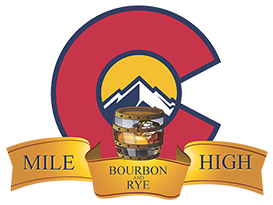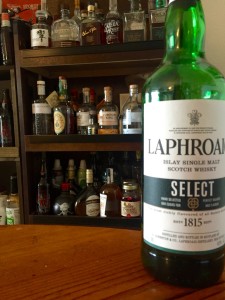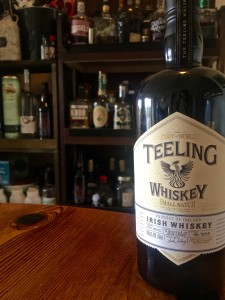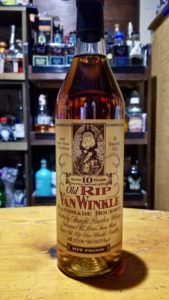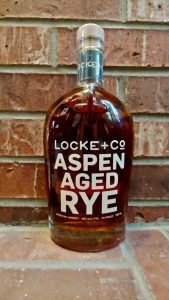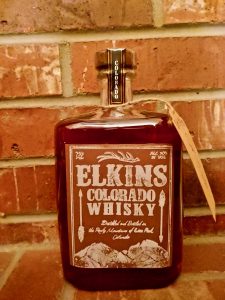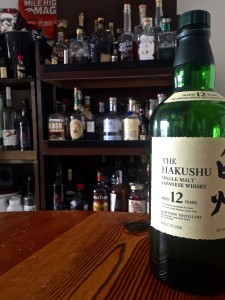Whiskey is our favorite when it comes to spirits. We enjoy a good gin, tequila, and anything else from time to time, but when asked what we would like, whiskey is our go to. However, that does not mean we are drinking the same thing every time.
Whisky comes in so many different forms with different flavors and smells, that it can be daunting if you are not familiar with it. You can have Bourbon, Rye, Canadian, Irish, Scotch (which in Scotland is just referred to as “Whisky”), Japanese, the list goes on.
First, what is whiskey? Whiskey is a spirit distilled from fermented grain mash. Various grains, sometimes malted, can be used, including rye, wheat, corn, and barley. Whiskey is also typically aged in charred oak barrels, although not always. The combination of these grains, the number of times distilled, the area it is produced, and the time spent aging all affect what kind of whiskey it is and can be called legally. Let’s get right into it!

Scotch Whisky (Or just Whisky)
Scotch Whisky, again just referred as Whisky in Scotland, is the original whisky. There are records of whisky being produced in Scotland since the 1400’s.
- It must be produced at a distillery in Scotland from water and malted barley, and only whole grains of other cereals may be added.
- The barley and other grains all must:
- Be processed at that distillery into a mash
- Be converted at the distillery to a fermentable substrate only by endogenous enzyme systems
- Be fermented at the distillery only by adding yeast
- Be distilled to an alcoholic strength of less than 94.8% alcohol by volume, or 190 proof.
- Must be aged for a minimum of 3 years in oak casks no larger than 700L in an excise warehouse in Scotland
- The product must retain the color, aroma, and taste of the raw materials used and method of production and aging.
- The whiskey cannot have added substances other that water and plain caramel coloring.
- The final product must be at least 40% alcohol by volume.
Scotch has a lot of unique flavors, influenced by a lot of factors. Usually, but not always, different regions are associated with different flavors:
- Speyside- Soft, fruity and sweet flavors, honey. No smoke at all.
- Lowland-A hint of smoke, floral notes, very light, short finish
- Highland/Island-A bit of smoke, slightly more than lowland, some floral and fruit flavors, a little bit of sweetness. Typically, a Highland Scotch is the most full bodied.
- Islay- Heavy smoke and peat, like drinking a campfire. Earthy, and a salt influence from aging so close to the ocean.
Irish Whiskey
Irish Whiskey can also trace it’s history back to the 1400’s and is home to the oldest licensed distillery in the world-Old Bushmill’s Distillery which was licensed in 1608. To be classified as an Irish Whiskey, they must follow these guidelines.
- Irish Whiskey must be distilled and aged in the country of Ireland.
- The contained spirits must not exceed 94.8% alcohol by volume.
- The contained spirits must be made from a yeast fermented mash of cereal grains in such a way that the distillate has an aroma and flavor derived from the grains.
- The whiskey must be triple distilled.
- The whiskey must be aged for a minimum of 3 years in wooden casks that are no larger than 700L.
- If the whiskey is made from two or more such distillates, the product must be referred to as “Blended Irish Whiskey.”
There are also different types of Irish whiskey, Single Malt, Single Pot Still, Grain, and Blended. Single Malt is produced only from malted barley and is distilled in copper pot stills. Single Pot Still whiskey contains a blend of malted and unmalted barley and can only be distilled on pot stills. Grain whiskey is made from any grains other than malt and is usually made in column stills. Blended is a blend of grain and malt.
Irish whiskey will have a smooth taste that coats the mouth, typically a little sweet, and a very smooth finish. The smoothness of an Irish Whiskey is usually attributed to the fact that it is triple distilled.
Bourbon
Bourbon is America’s Spirit, brought over to the US by Scottish and Irish Immigrants in the 1700’s. Made from predominantly corn, as that is what was widely available, Bourbon is built right into the fabric of America. The invention of bourbon is often attributed to Elijah Craig, but that is apocryphal, as bourbon was more likely created by committee as many distillers made the spirit into what it is today. To be called Bourbon, the spirit needs to follow these rules.
- It must be made in the United States of America. (Contrary to what some say, it does not have to be made in Kentucky, although that is the Bourbon center of the U.S.) You will never find any whiskey made outside of the U.S. labeled as bourbon.
- It must be made from at least 51% corn. There are no restrictions otherwise as to how much rye, wheat, or cereal grains can be added, but they cannot exceed 49%.
- It must be distilled at less than 160 proof, or 80% alcohol volume.
- The barrels for aging must be new, charred, American White Oak. Each barrel will need to be made from brand new American white oak, and not re-used.
- When put into the barrel for aging, the whiskey must not exceed 125 proof, or 62.5% alcohol by volume.
- The whiskey must be aged in the new, charred, American White Oak barrels for a minimum of 2 years in order to be designated as Straight Bourbon. There is no maximum time limit for the bourbon to be aged, so it can be as old as the distiller wants.
- Finally, the bourbon must have unadulterated flavors. This means that there cannot be anything added to change the flavors, all the flavor must come from the grains, distilling, and aging process.
Bourbon is typically characterized by its sweet flavors from the corn, as well as having influence from the charred oak such as flavors of brown sugar and vanilla.
Rye Whiskey
American Rye
- The mash bill must be made from at least 51% rye. Any of the other 3 grains can be used, but typically American Ryes will use corn and malted barley.
- It is distilled to no more than 160 Proof, or 80% Alcohol by Volume.
- It must be aged in new, charred oak barrels.
- The whiskey must not be put into the barrels at more than 125 proof, or 62.5% alcohol by volume.
- To be designated straight rye whiskey, it must be aged for at least 2 years.
Rye whiskey is characterized by it’s spicy, and sometimes fruit flavors, as well as having characteristics from the barrel it’s aged in, similar to bourbon.
Canadian rye does not have any requirements to be labeled as rye whisky, so we will cover that with Canadian Whiskies.
Tennessee Whiskey
Tennessee whiskey is made with the same rules as bourbon, except that it is made in the state of Tennessee. Distillers of Tennessee whiskey producers claim that their whiskey is the only one passed through a charcoal filtering process, and therefore should be differentiated from bourbon. Otherwise, the same rules as bourbon apply.
Tennessee whiskey will have a lot of similar characteristics of bourbon, sweetness from the corn, with the same influences from the aging process. It is also claimed that the charcoal filtering process makes the whiskey smoother, but that is up to you to decide.
American Whiskey
American Whiskey is any whiskey that is made in the United States, but doesn’t conform to one or more of the regulations to be called Rye, Bourbon, or Tennessee whiskey. This can mean it is not aged long enough, has a different mash bill, or anything that disqualifies from being labeled as one of the other styles. That also means that a whiskey labeled as American Whiskey can have a vastly different flavor than another with the same designation.
Colorado Whiskey
This is Mile High Bourbon and Rye after all. Really all Colorado Whiskey means is that it was made in Colorado. It must follow all other labelling laws, so if it is a bourbon-it must be labeled as such.
Canadian Whisky
- Canadian Whisky must be mashed and distilled in Canada.
- The alcohol content may exceed 90% alcohol by volume, or 180 proof.
- The spirits must be aged for a minimum of 3 years in wooden barrels no larger than 700L capacity.
- The final whisky must be at least 40% alcohol by volume, or 80 proof.
Whisky in Canada can be labelled as Canadian, Canadian Rye, or Rye, when sold in Canada. However, when exporting the product, usually the labelling must conform to local laws and regulations, so Canadian Rye Whisky sold in the US must conform to US regulations.
Canadian Whisky is usually associated with sweet flavors, easy to drink, and is blended from a selection of whiskies; high proof grain whiskey, lower proof rye grain, Canadian made bourbon style whisky, and sometimes barley whiskey. Flavors also can come from the barrel, similar to bourbon and rye, adding some vanilla and brown sugar notes.
Japanese Whiskey
- The only real rule we have found in our research is that it must be produced in Japan.
Japanese whiskey was modeled almost entirely off of the process that Scotch whiskey is made. However, due to the climate differences, and other factors, it will not taste exactly like Scotch. Usually there is more oak influence because the whiskey ages faster with the more extreme climate changes season to season. If you have any more rules or regulations for Japanese whiskey, please let us so we can flesh this one out more.
There are still other styles we didn’t touch on here, including flavored whiskeys, moonshine, and whiskeys from all across other parts of the world. We hope this was a useful guide-and if there is anything you think we should add, please feel free to write us at contactus@milehighbourbon.com.
Cheers!
Consider helping us keep the lights on, servers up, and the whiskies pouring! You can do so by clicking and shopping through any of our affiliate links, donating with Paypal directly, or purchasing our swag from our shop!
